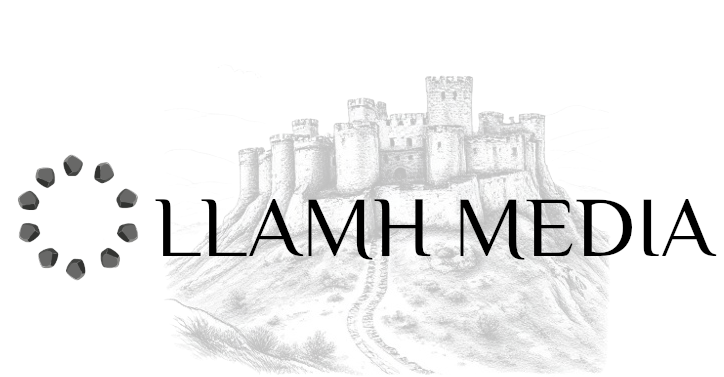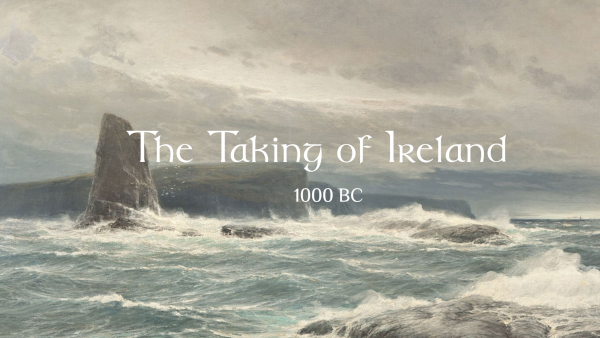Historians and academics better know the ancient Irish book Lebor Gabála Érenn as The Taking of Ireland. This important text consists of six different invasions culminating with the people we know today as the Gaels. Irish monks documented and wrote down the surviving oral traditions compiling all into one book. It begins with the very first people to set foot on Irish soil. The people group led by a personality known as Cessair.
Cessair’s Taking Of Ireland
The first people to arrive in Ireland are led by Cessair, daughter of Bith, son of Noah. The women who accompany Cessair appear by their names to represent the world’s ancestral mothers; they included Alba (ancestor of Britons), Espa (Spanish), German (Germans), Gothian (Goths), Traige (Thracians) and so forth. Thus “their arrival can be read as creating a microcosm of the whole world’s population in Ireland”.
The Partholon’s Taking Of Ireland
A second group of people then arrive in Ireland after it had been uninhabited for 300 years. The Partholon, also descended from Noah. The Irish monks credit them with introducing cattle husbandry, ploughing, cooking, brewing, and dividing the island into four territories.
Nemed’s Taking Of Ireland
Ireland is then uninhabited for 30 years, until a third group of people arrive. Nemed a descendant of Noah leads this third group to Ireland.
They set out from the Caspian Sea in 44 ships. Nemed would captain the only ship out of the 44 that made it to Ireland.
During their time in Ireland, the Nemedians clear twelve plains and build two royal forts, and four lakes burst from the ground. They also win four important battles against the resident Fomorians. Soon after Nemed and many others die of plague, the Formorians then oppress the Nemedians. Conand and Morc the Formorian Kings then rule over Ireland. As a tribute, each Samhain, the Nemedians must give two thirds of their children, their wheat and their milk to the Fomorians. This tribute that the Nemedians are forced to pay may be “a dim memory of sacrifice offered at the beginning of winter, when the powers of darkness and blight are in the ascendant”. Eventually the Nemedians rise up and attack the Tower of Conand with 60,000 warriors (30,000 on sea and 30,000 on land), defeating Conand. Morc then retaliates, and almost all of the Nemedians are either killed in the fighting or swept away by the sea. Only one ship of thirty men escapes. Some of them go “into the north of the world”, while some go to Britian and become the ancestors of all Britons, and some others go south to Greece.
The Fir Bolg
After 230 years of slavery in Greece they sail back to Ireland. The returnees then divide Ireland into five provinces. A succession of nine High Kings rule over Ireland for the next 37 years.
Tuatha De Danann
Those who went north were the pagan Gods of Ireland, known as the Tuatha De Danann. They return to fight the Fir Bolg for the ownership of Ireland. The Tuatha De are victorious. The defeated Fir Bolg then flee Ireland and settle on remote offshore islands. However, in the battle the king of the Tuatha De loses his hand or arm and is thus no longer fit to rule over Ireland. He is replaced by Bres (a half-Fomorian), who becomes High King of Ireland. The Tuatha de eventually reclaim the throne as Lugh kills Bres and becomes King. They rule in peace for 150 years.
The Milesian’s Taking Of Ireland
Ith, a milesian spies Ireland from the top of Breogans tower and sails to the island with a group of men. Ith meets the three kings of the Tuatha de, however he is killed by unnamed attackers and his men return to Iberia. The Gaels then set forth to avenge his death. These warriours are the sons of Mil Espaine, the “soldier of Hispania”. When they land, they fight against the combined forces of the Tuatha de and the Fomorians. Banba, Fodia and Eriu, the wives of Ireland’s three kings met the Gaels on the mountain as they made their way to Tara. Each wife asks them to name the Island after her if they be victorious. The Gaels achieve victory over the combined resident forces and honour their promise by naming the island Eriu. The Gaels and the Tuatha de then make a truce and divide the Island between them, with the Gaels taking the world above and the Tuatha De taking the world below.”

